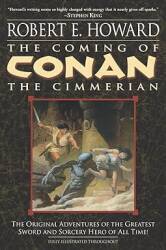
Tala'a Kebira
Exploring Tala'a Kebira, the Main Street Through the Fez Medina
Tala'a Kebira is the main street
through the medina of Fez el Bali.
It leads from two major gates through
commercial districts,
ending in the large cluster of souqs near the
Qarawiyyin Mosque,
the main mosque of the city.
Above at center is Bab Chorfa
(which Google Maps may mislabel as Bab Mahrouk),
facing out into Place Boujloud.
Tala'a Kebira begins in a passageway out of sight
to the right.
It runs past the Bab Boujloud gate
and then continues east for a little over a kilometer
to the Qarawiyyin Mosque and University.
There are several standard sights for the visitor along
Tala'a Kebira,
but it's also where the local people take care of
business — buying their groceries,
clothing, and supplies for their homes,
or visiting the dentist or finding a repairman.
Fortified cities like Fez have multiple layers of nested walls. Bab Mahrouk, out of sight to the left in the pictures above and below, is the gate through the outer wall. Tala'a Kebira begins there, leading across the open plaza.
Bab Mahrouk was built in the early 1200s. It leads from Place Boujloud into the Kasbah An-Nouar, a formerly military walled district within the outer walls. Just as in Meknès, the enormous fortified walls with elaborate gateways look to me like something out of central Asia, from Samarkand or similar, or from tales of the Hyborian Age. But here we are in Fez, five degrees west of London, all the way across North Africa from the western edge of Asia.
The path of Tala'a Kebira passes left to right immediately in front of this gate, on the other side of the row of vendor tents.
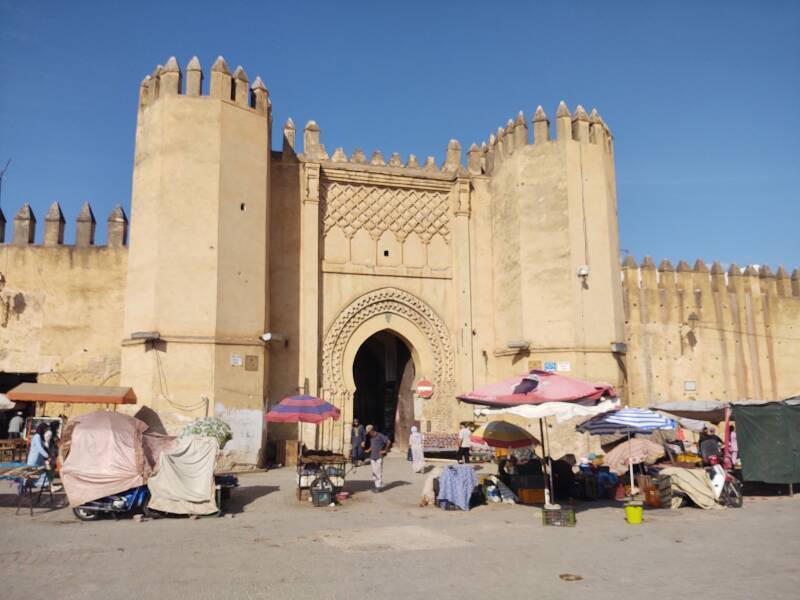
I would go back across Place Boujloud to Bab Boujloud, today's main western entrance into the medina. It has a traditional design, but it was built in 1913 by the French colonial administration, one year into the Protectorate.
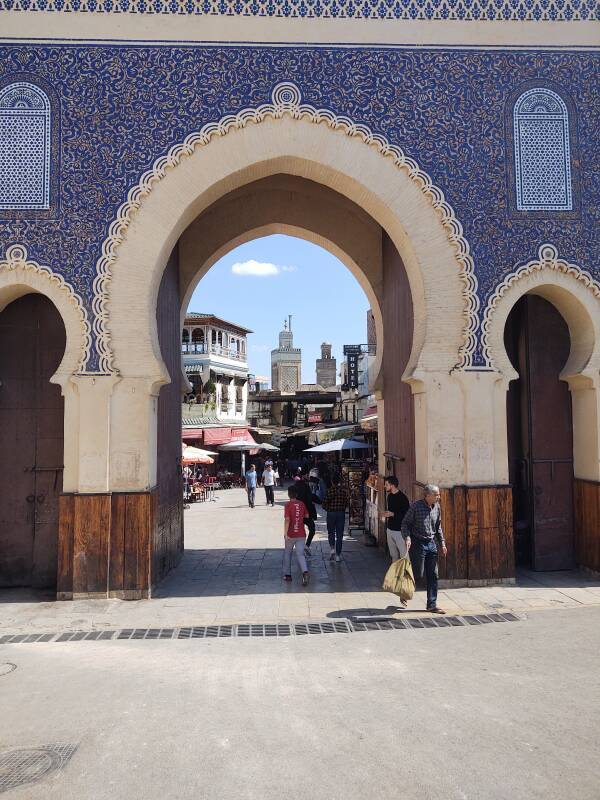
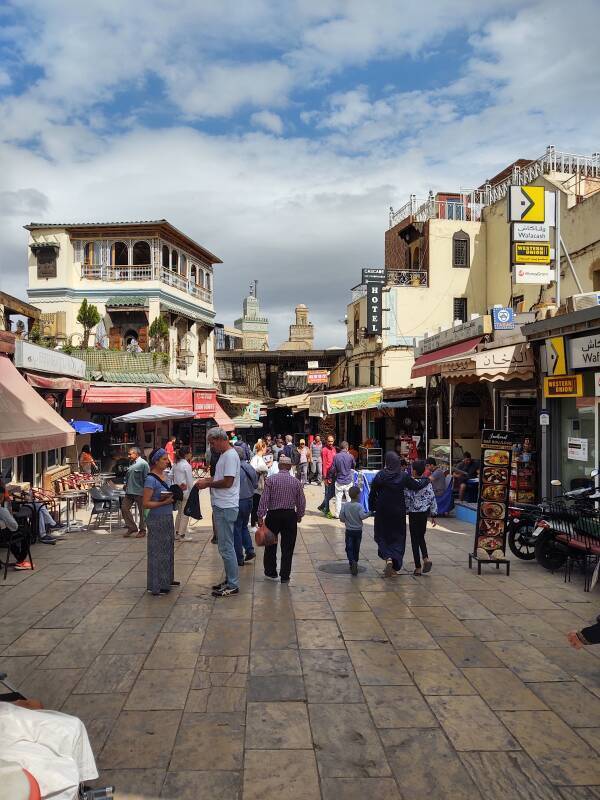
Once through the gate, you see the green-trimmed minaret of the Bou Inania Madrasa, at left in the two pictures above. You could continue straight ahead across this square to the roofed-over section and then turn right for about thirty meters and then left to follow Tala'a Sghira, as shown in the pictures from when I first arrived.
But I wanted to follow Tala'a Kebira, which would take me past the Bou Inania Madrasa and on to the east. There's a white multi-story building with balconies and red awnings at the left in the last picture above. Just before passing it, I would turn to the left, walk north about twenty meters to where Tala'a Kebira properly starts, and then turn right.
The west end of Tala'a Kebira, which is mostly roofed over, is filled with shops selling food — butchers, grocers, vegetable dealers.
Bou InaniaMadrasa
Before long the roof opens under the minaret of the Bou Inania Madrasa shortly before passing through the archway at its entrance. We'll come back and see that in detail on the next page.
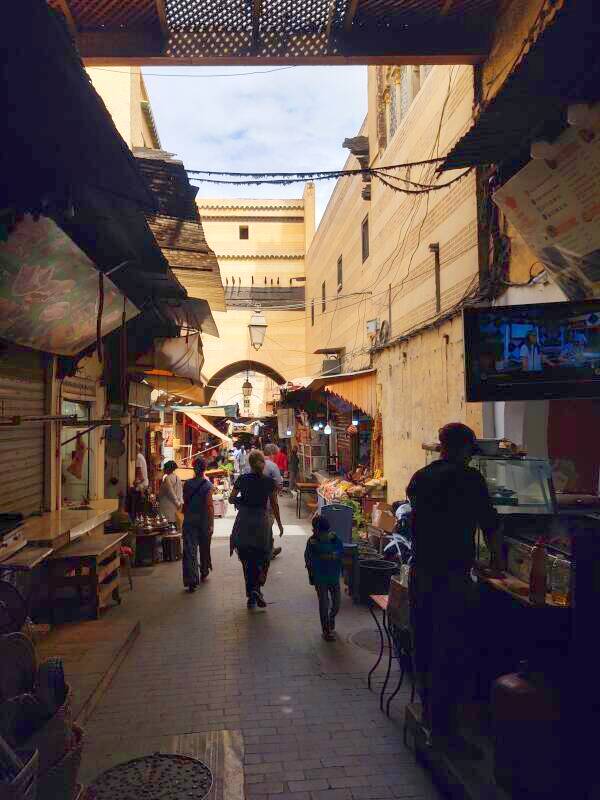
This madrasa has a minaret, which is unusual. Of course a madrasa will have a prayer hall, but it's very uncommon for a madrasa to have a minaret to announce the call to prayer over the neighborhood.
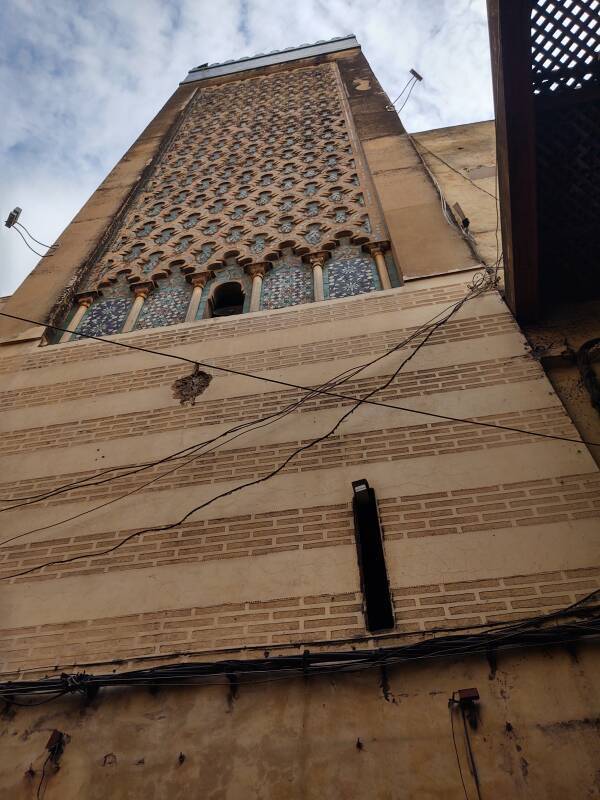
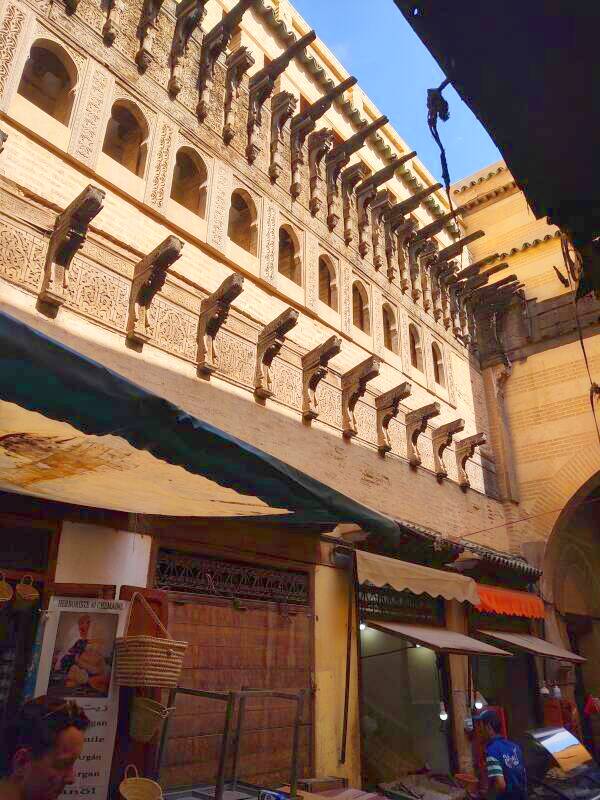
The madrasa complex also has Dar al-Magana, the "House of the Clock", seen above. It housed a weight-powered water clock which dropped a metal ball from each small window into a brass bowl held on the small arm below it. There's more about this on the Bou Inania Madrasa page.
The picture above shows the edge of the archway through which Tala'a Kebira passes, at right. The madrasa complex is built across the street, with the street in an arched passageway. The entrance to the madrasa is to the right as we continue to the east.
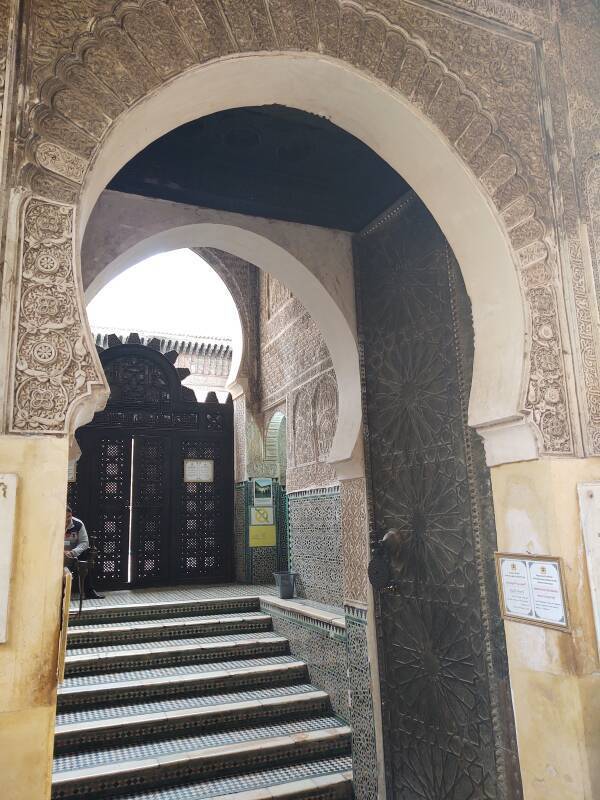
A vendor had set up shop with his handcart in that arched passageway, directly across from the madrasa entrance. Among other products, he had a large bundle of spearmint.
Morocco needs many spearmint vendors selling a lot of spearmint to support all the tea they drink! Here is part of the supply chain.
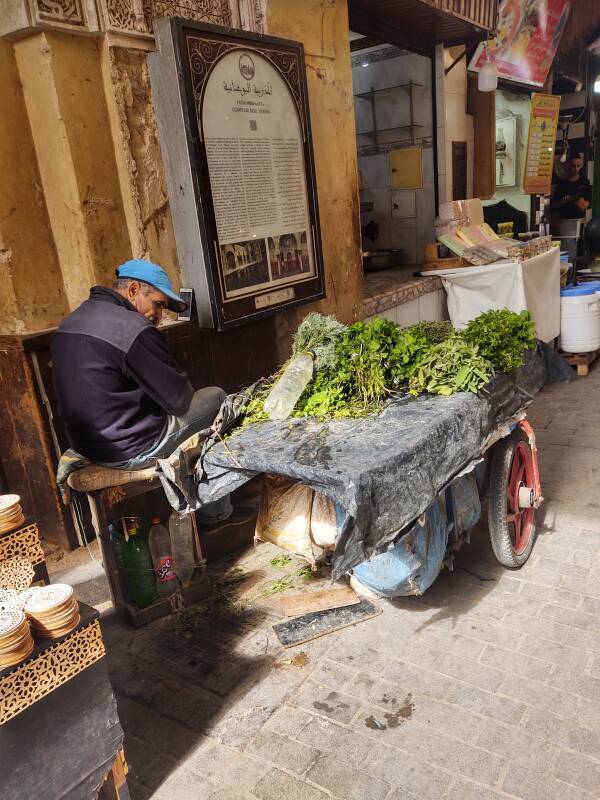
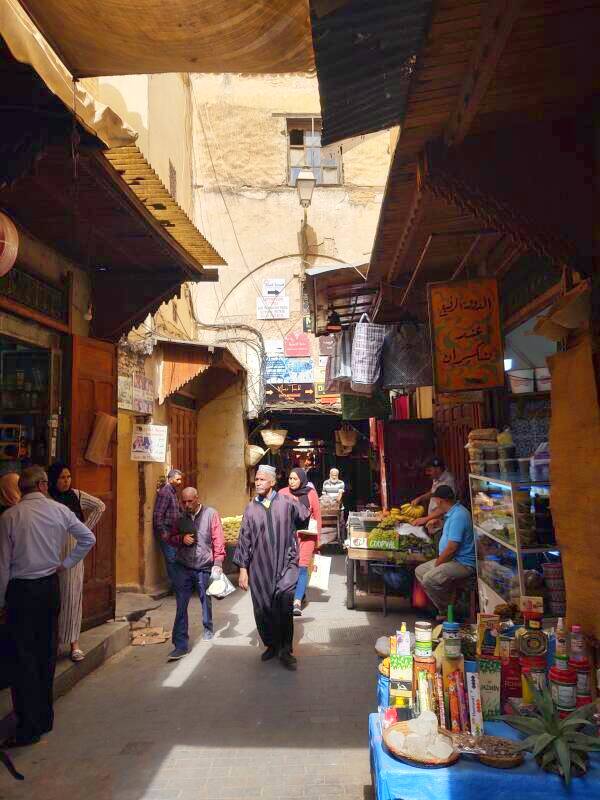
Tala'a Kebira continues east, open to the sky in places, roofed over in others, and sometimes passing through buildings.
Most of the shops are for local residents and people who have come to the medina for supplies. Or, to find a plumber or visit the dentist.
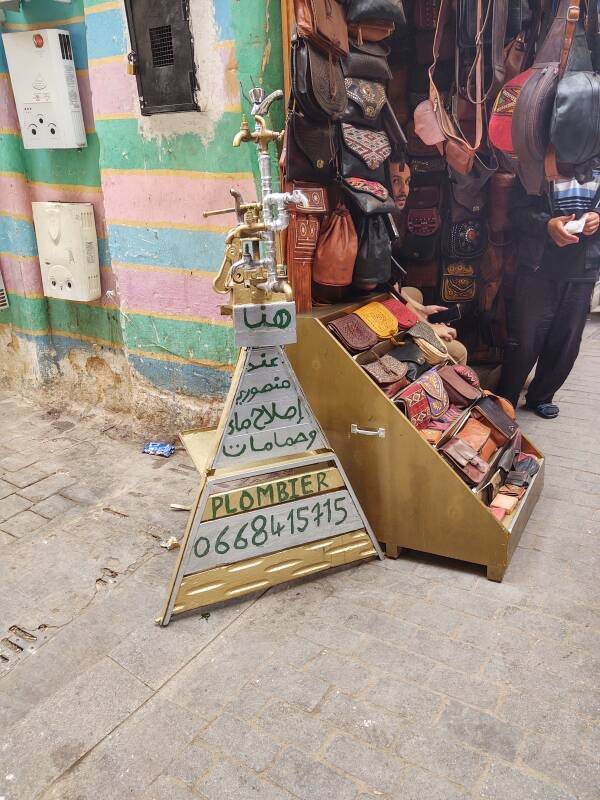

Or to buy some spices or kitchen implements.
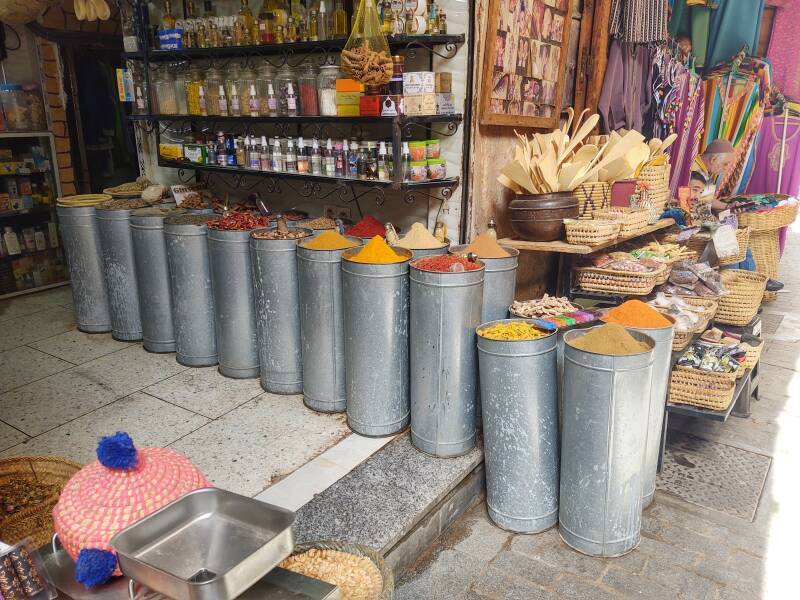
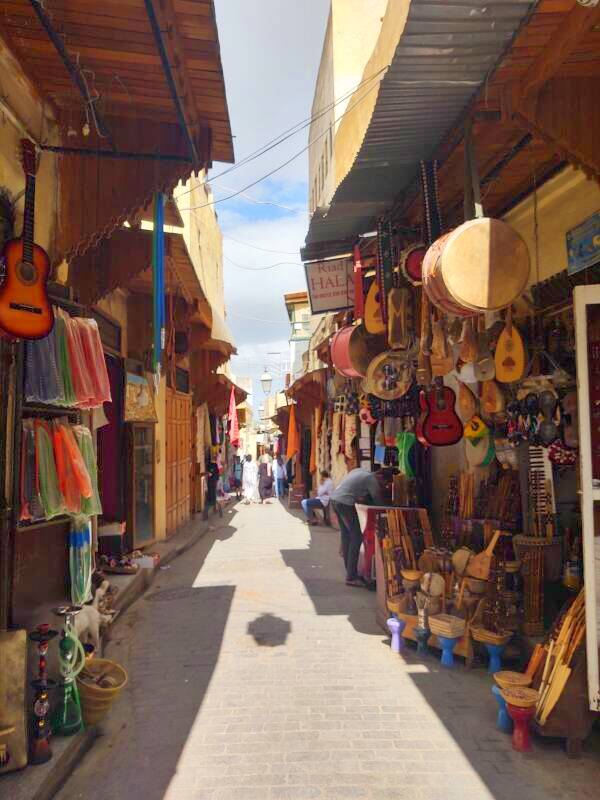
Each neighborhood is defined by its primary mosque. Here's the entrance to one.
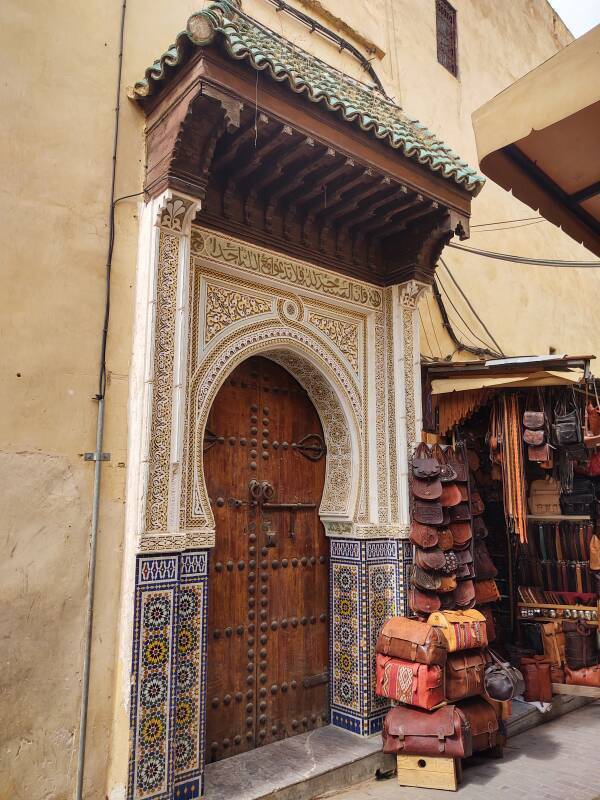
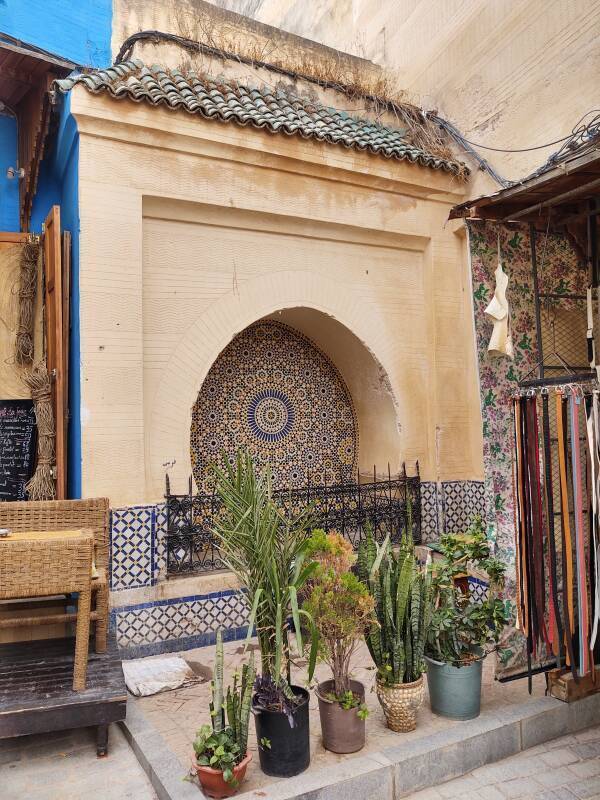
There will be a fountain nearby, for drinking and cooking water, and for pre-prayer ablutions. There will be a hammam, a bathhouse, and the furnace to heat its water will probably also serve as the neighborhood's bakery. People prepare their bread at home and take it to the bakery to be baked. Everyone punches or cuts their bread in a distinctive pattern so the bakery can sort out which bread belongs to which customer.
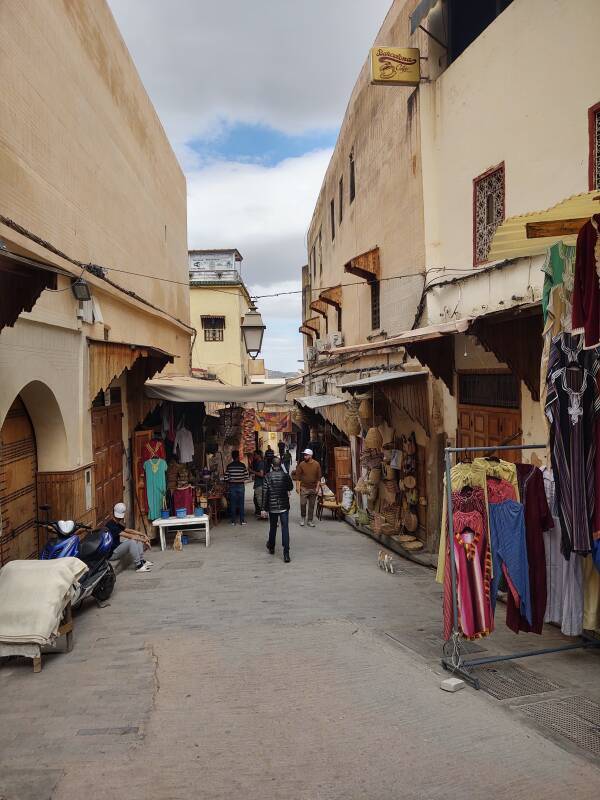
The fondouks have been inns for traveling merchants for centuries now. The same thing is called a han in the bazaars or out along the Silk Road in Turkey. Several fondouks are located along Tala'a Kebira.
Qaât Smen Fondouk, the Butter Market, dates back at least to the 17th century CE. A long straight entryway with a series of painted arcades lead to it.
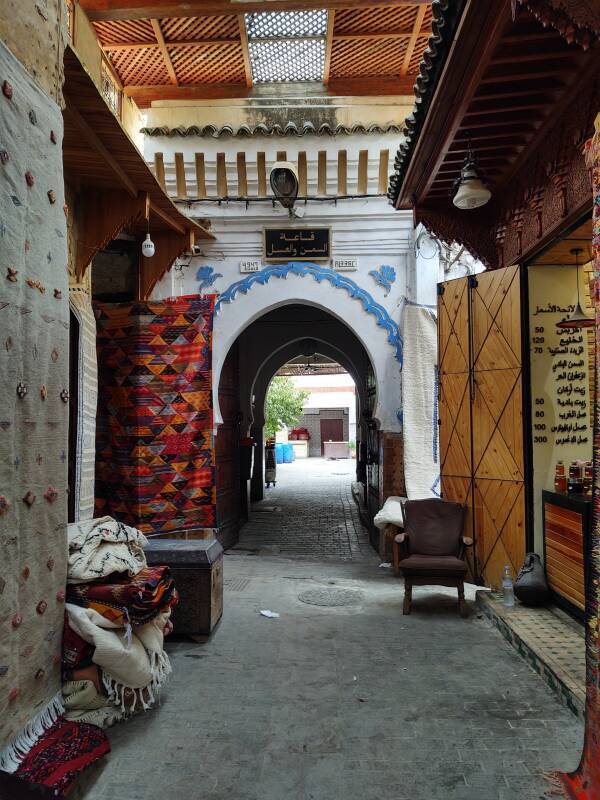
Two floors surround the rectangular stone-paved patio of Qeât Smen Fondouk. A gallery surrounds the patio and houses shops of various sizes. On the ground floor here you can still buy rancid butter, honey, olive oil, and the Fassi-style dried meat called Khliâ, which has been cooked and preserved in animal fat.
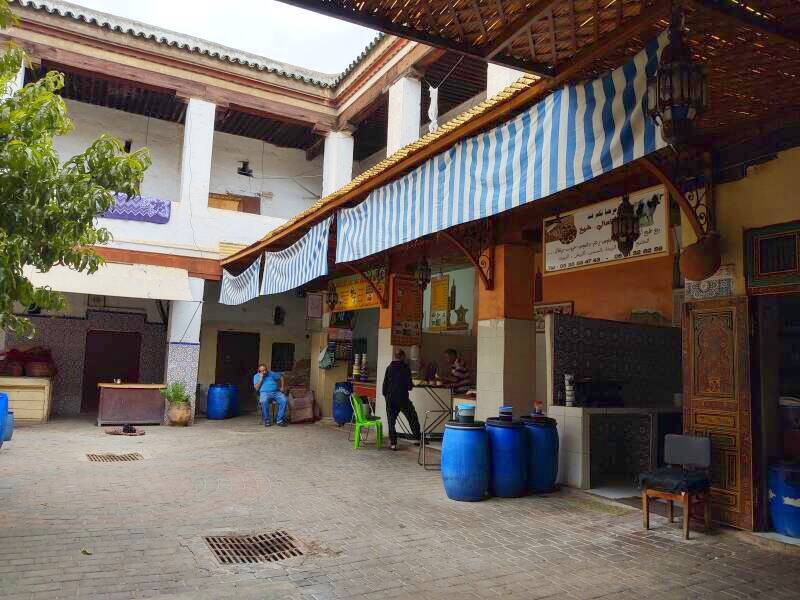
The second floor houses workshops for leatherworkers and fabric weavers.
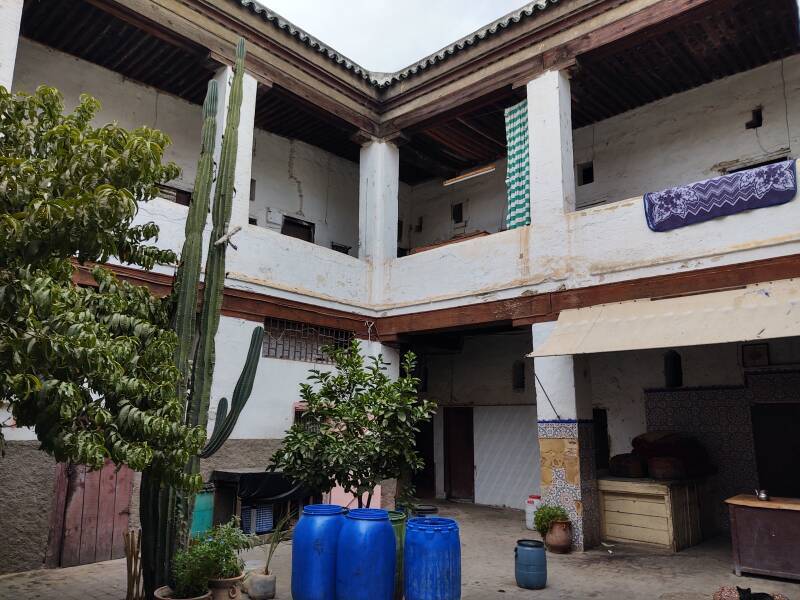
Tazi Fondouk connects to Tala'a Kebira through a short passage. Its exact date of construction is unknown, but the building has undergone several major transformations.
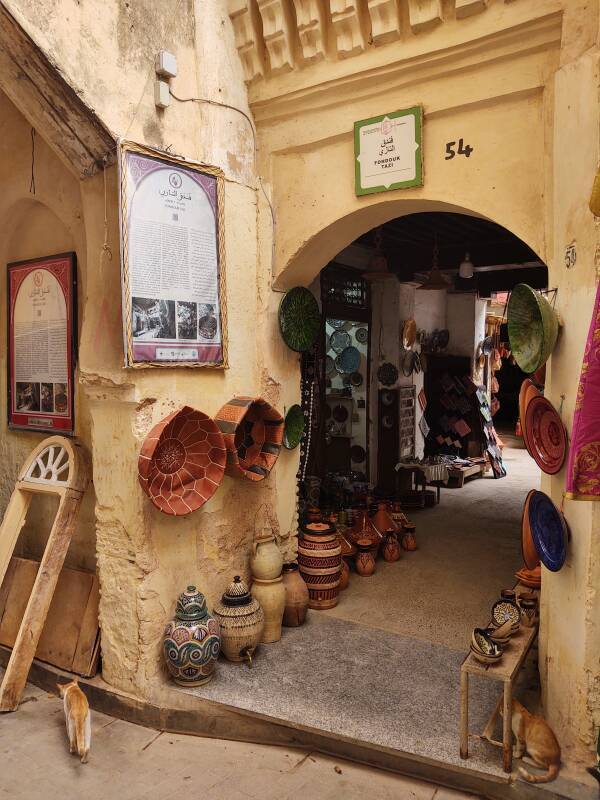
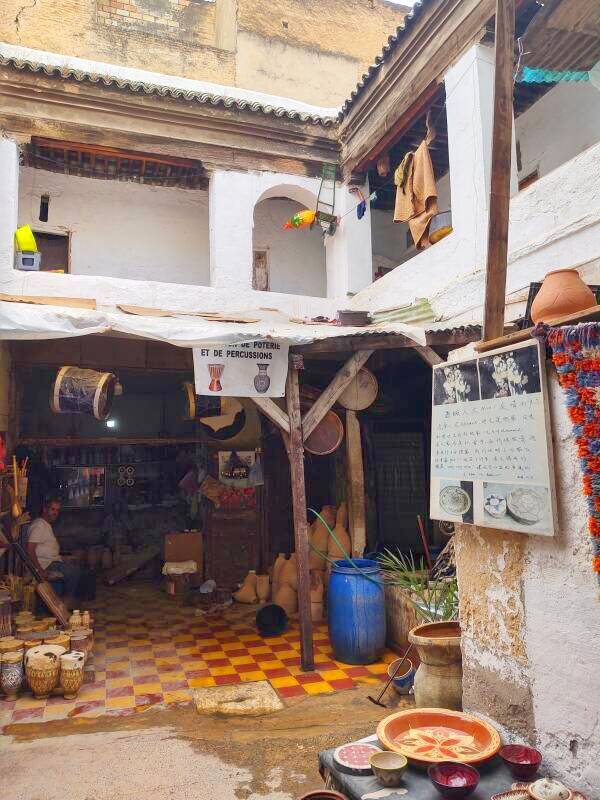
The ground floor has a percussion instrument workshop, a ceramics workshop, and a leather workshop.
The upper floor has maintained its original function, it still is a temporary residence for traveling merchants.
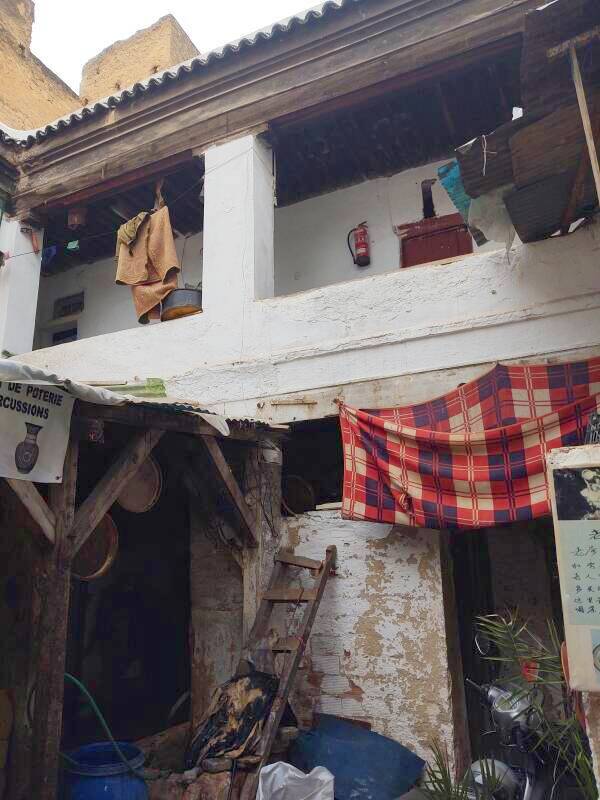
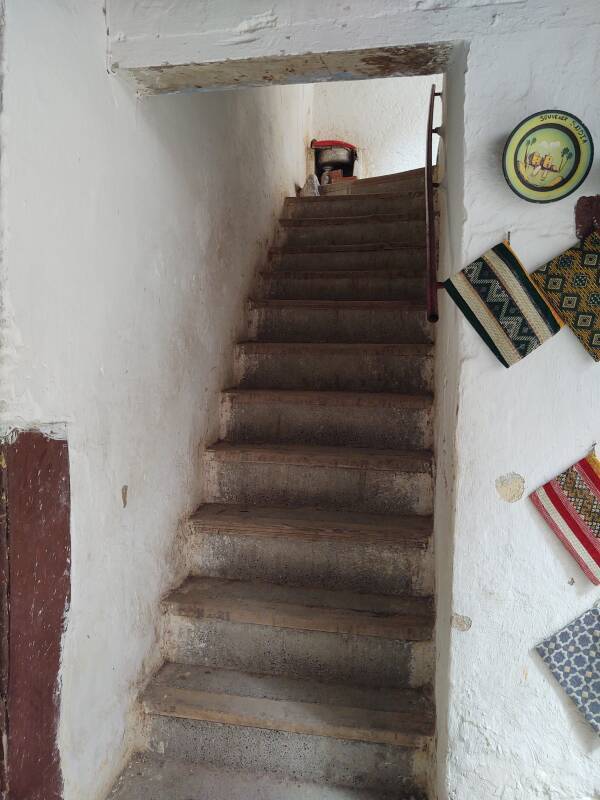
Google Maps struggles in the medina, referring to a souq as a "Shopping Mall" and to a fondouk as a "Truck Stop".
Well, I suppose that those are the North American analogies. But what's a truck stop that you can't reach in a motor vehicle?
I continued generally west and downhill along Tala'a Kebira, crossing into another neighborhood with its own primary mosque and fountain. Plus, tucked away somewhere off to the side, the neighborhood hammam and bakery.
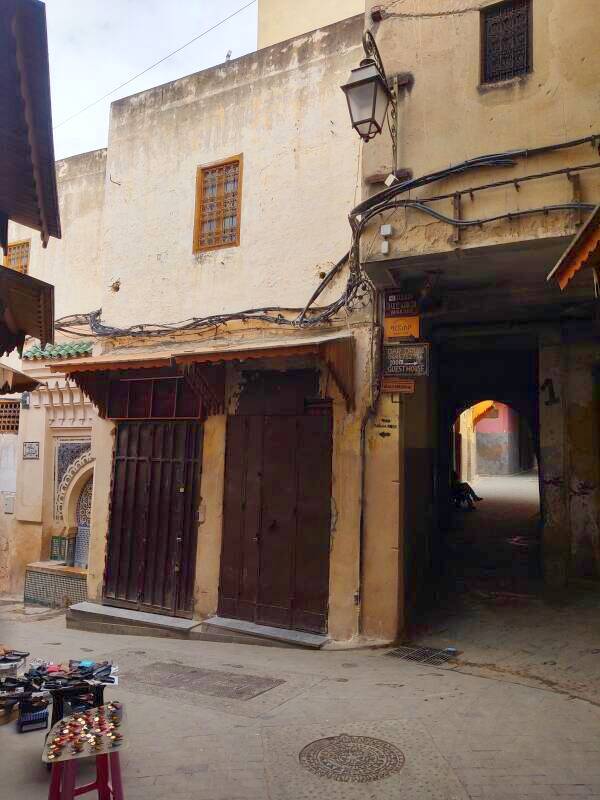
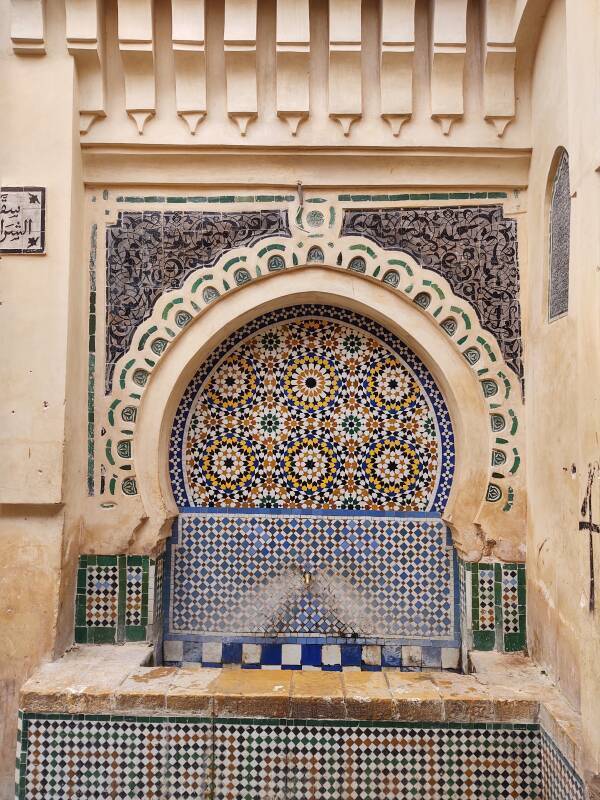
Tala'a Kebira makes sharp turns and passes under roofed sections.
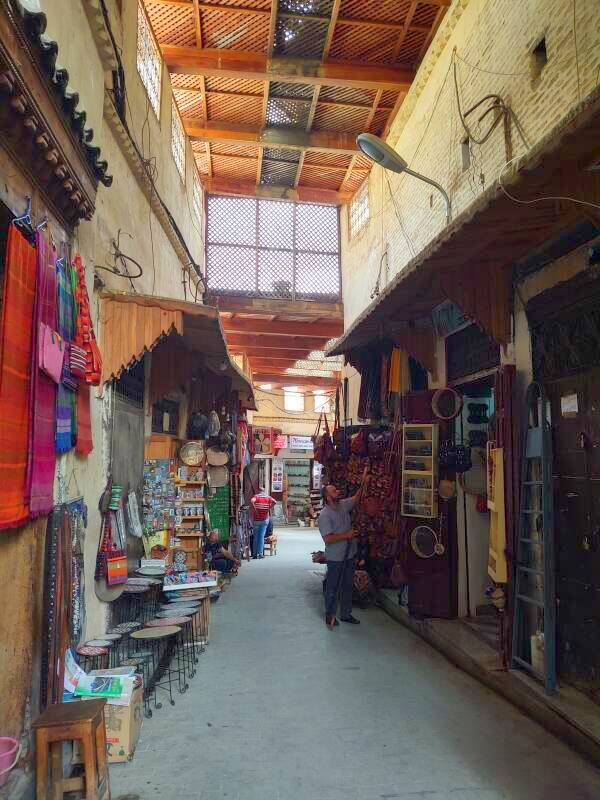
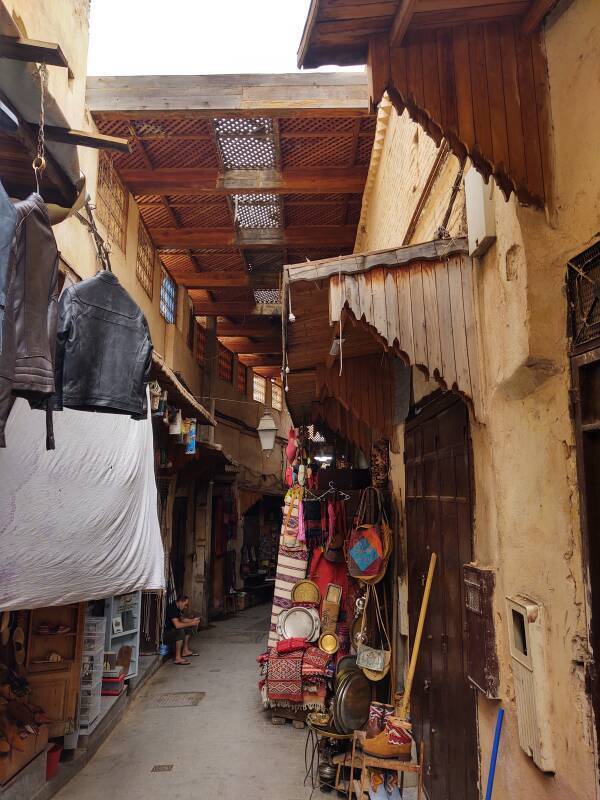
Coming out of a roofed section you enter the Chrabliyine or Shirabliyyin neighborhood. In the past, most of the shops here were devoted to the sale of cherbil or slippers, also called babouch. Now the shops have diversified, selling a mix of goods to a mix of customers — locals, rural Moroccans visiting Fez, and foreign visitors.
Ahead is the minaret of the Chrabliyine Mosque.
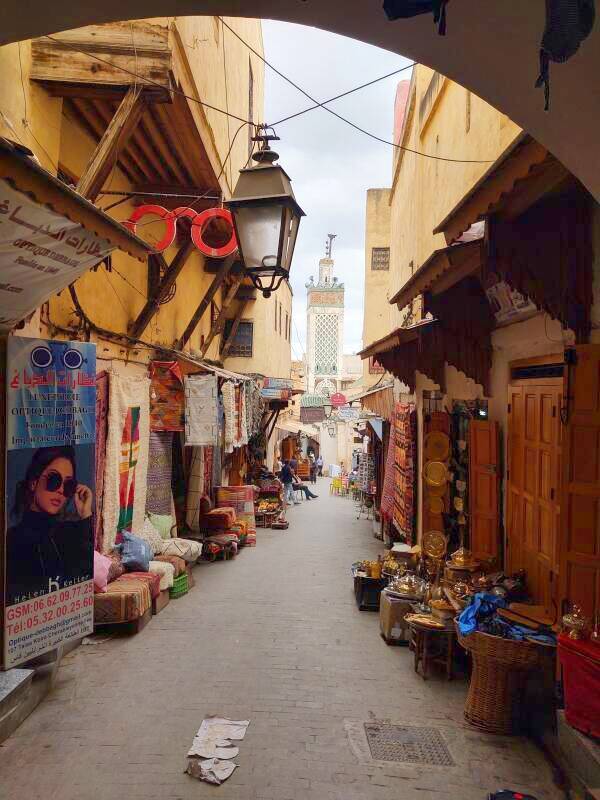

The Chrabliyine Mosque is roughly halfway between the west end of Tala'a Kebira near Place Boujloud and its east end at the Qarawiyyin Mosque.
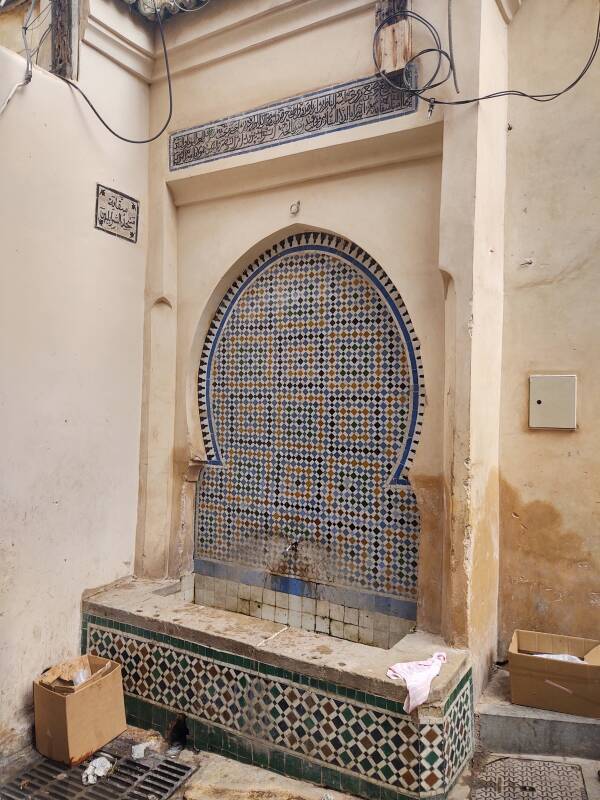
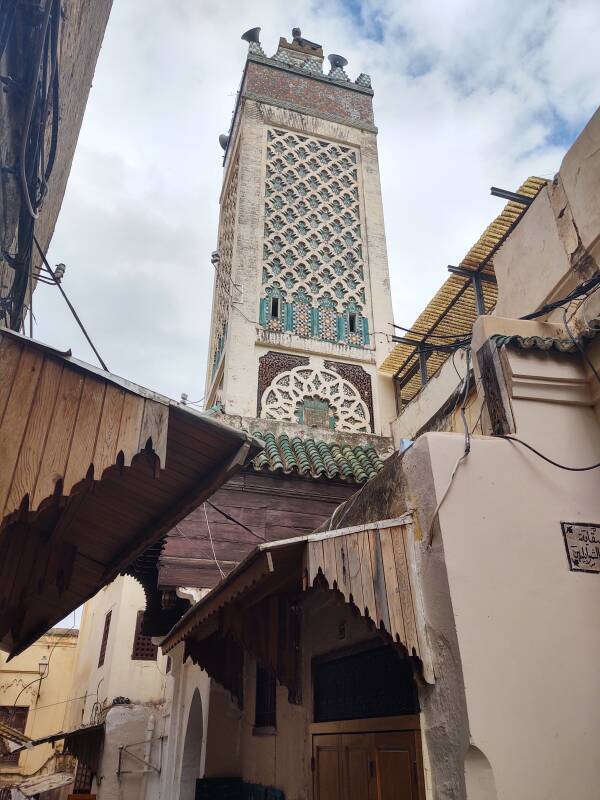
Just east of the Chrabliyine Mosque, Tala'a Kebira begins descending more steeply and is called Ras Tiyyalin or "Crest of the Sifters".
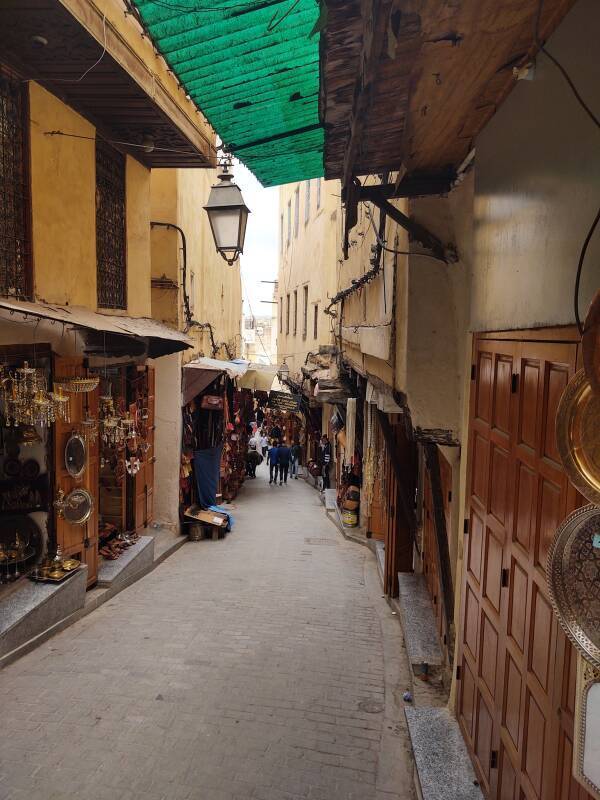
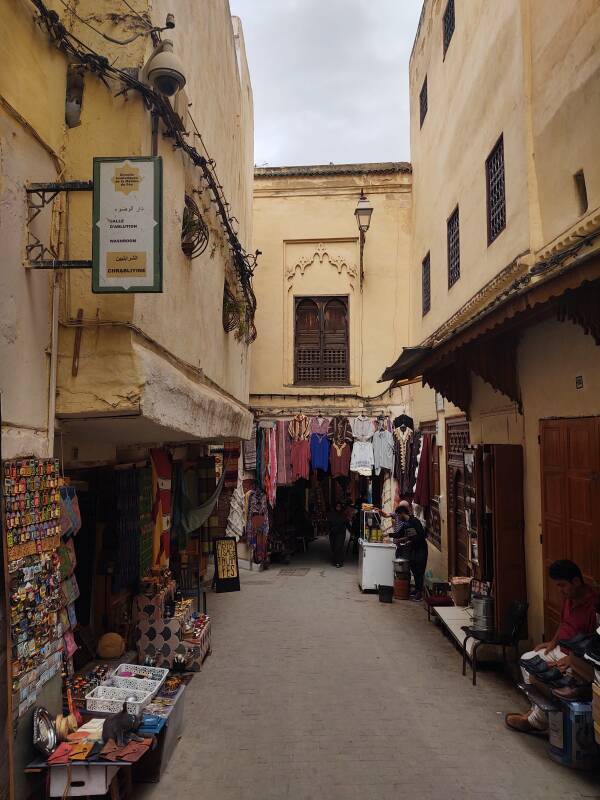
Another mosque, so another fountain and another neighborhood.
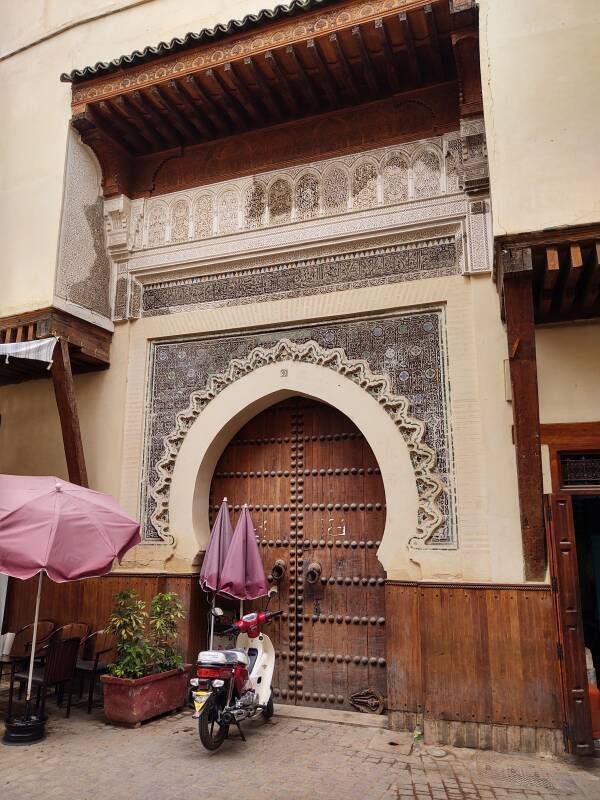
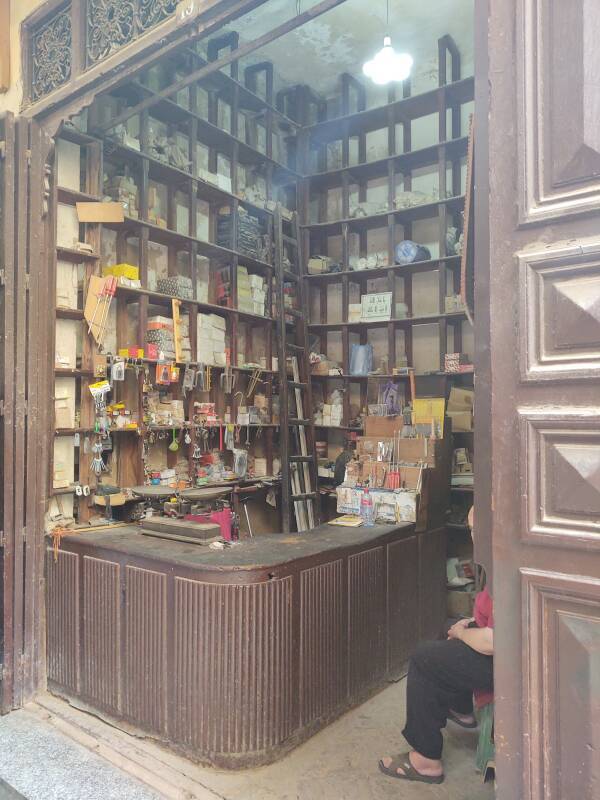
Tala'a Sghira is the other major street through the medina, although it's not as prominent as Tala'a Kebira. It joins Tala'a Kebira at the edge of a large roofed-over section.
This is the Souq al-'Attārīn, the Spice Market. The chroniclers Leo Africanus and Luis del Mármol Carvajal wrote that there were 150 to 170 shops here in the 16th century. There are gates around its perimeter, which in earlier eras were locked by guards at night. Now the individual shops have their own sturdy locking doors or roll-down gates.
You can still get spices and medications here, but the shops have diversified. It's mostly locals shopping here, but of course all are welcome. If you need to pick up a bottle of shampoo or a padlock or batteries or anything else for your travels, you will find many choices.
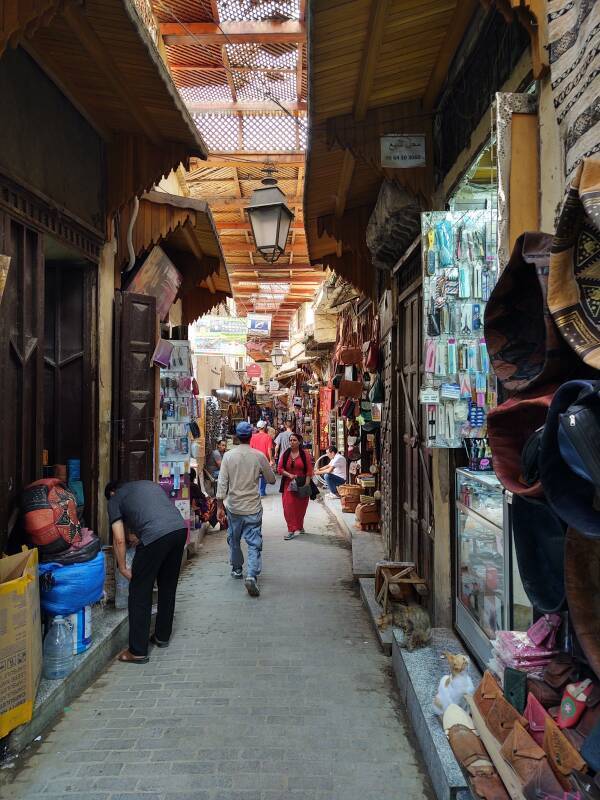
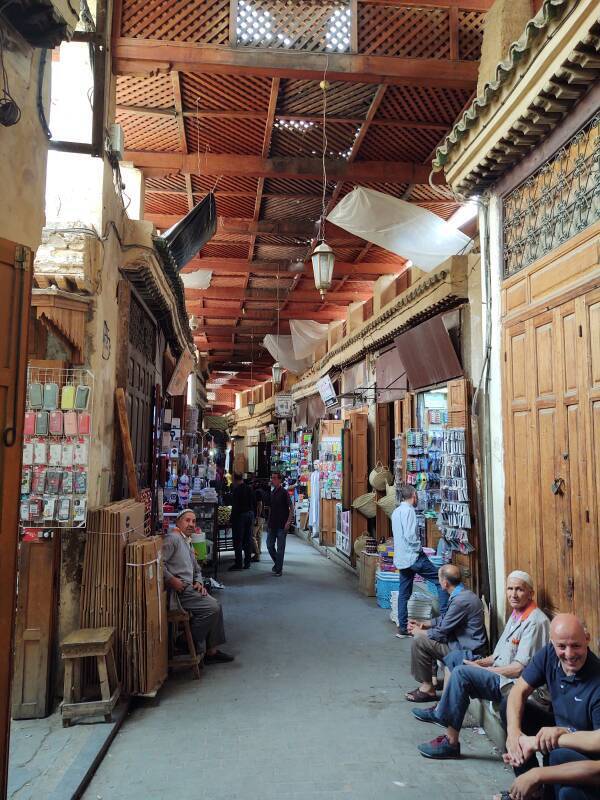
Off the south side of Tala'a Kebira is the Souq al-Henna, traditionally the market for henna and other beauty and hygiene products. Its center is a small square with trees. If you venture into it you will receive many offers for demonstrations of various soaps and unguents.
Or, maybe you just need to take a bathroom break. See the sign for Latrines Bellagines.

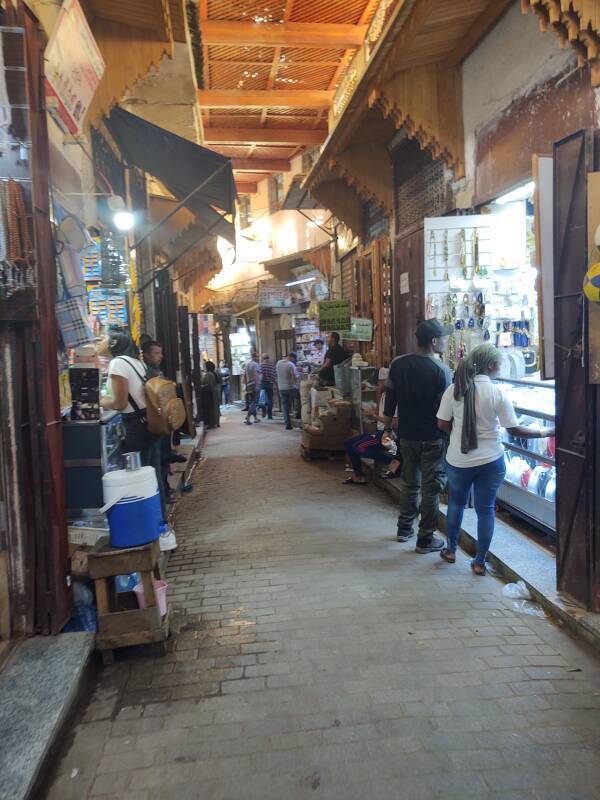
Motor vehicles can't enter the souqs. Not because of a rule, but because they simply wouldn't fit. Donkeys and small horses haul the freight. They wear diapers so the passageways stay clean. The souq is much cleaner than grocery store parking lots in southern Indiana, where you have to carefully make your way around piles of horse feces.
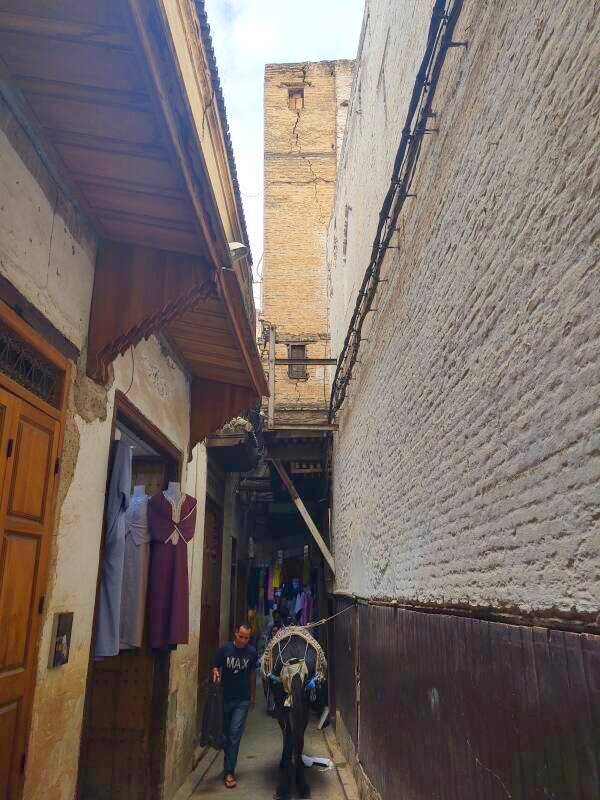
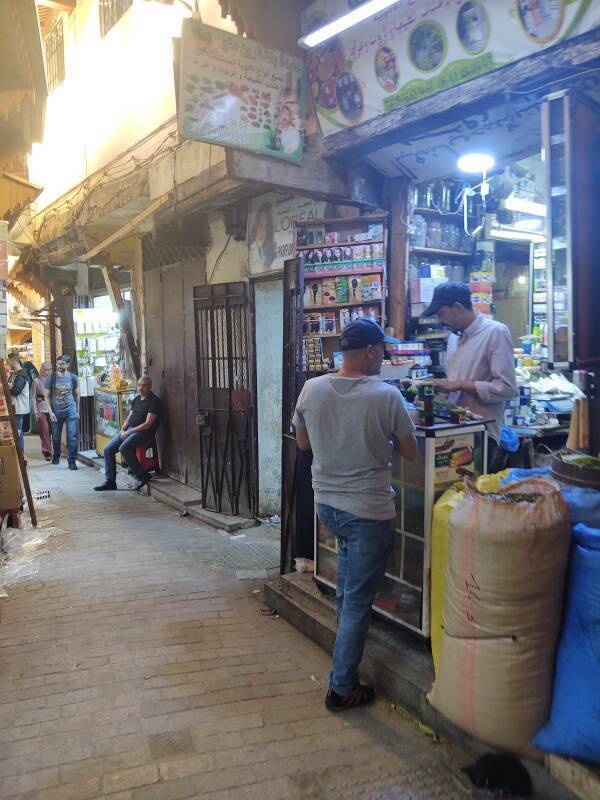
On the north side of Tala'a Kebira in this area there are several markets arranged around small squares — the Souq at-Tellis, the Souq el-Haik, the Souq as-Selham, and the Souq al-Bali. Each traditionally specialized in a particular type of clothing or textiles.
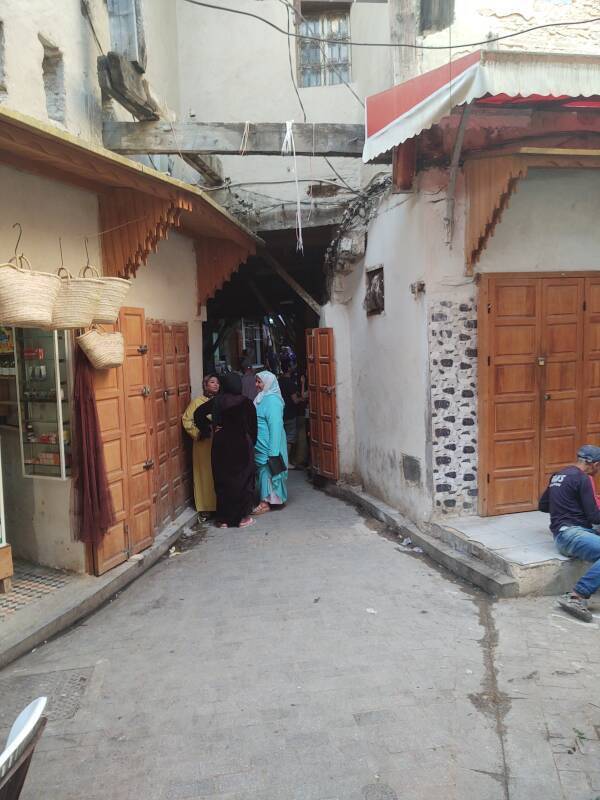
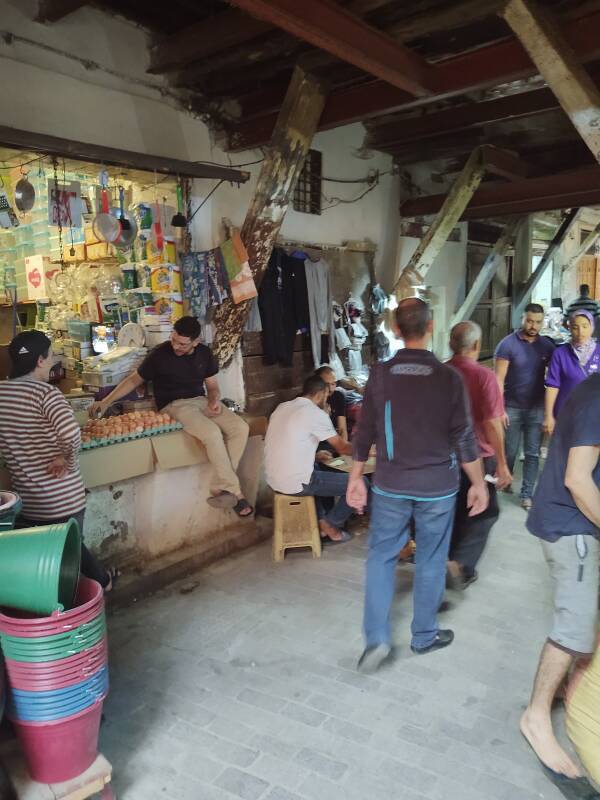
Now some of these markets are focused on food.
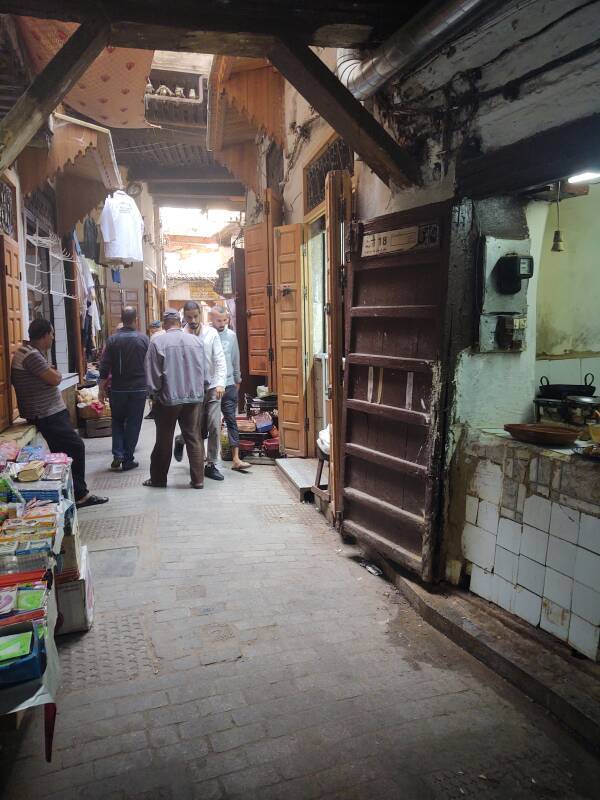

Navigation can be a challenge. Don't say that you're lost. You know that you're in Fez. Keep wandering.

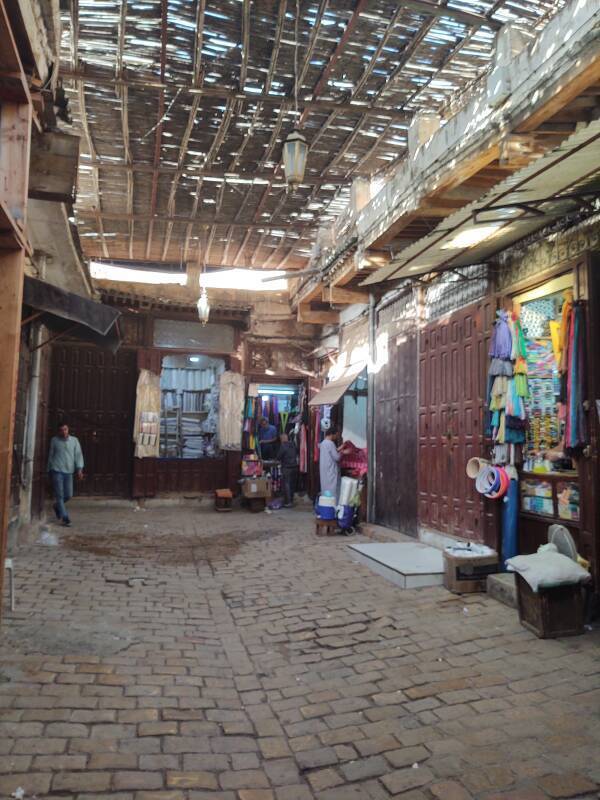
Tala'a Kebira and the Souq al-'Attārīn end at the al-'Attārīn Madrasa.
The next page takes us back toward the west end of Tala'a Kebira to the Bou Inania Madrasa.
